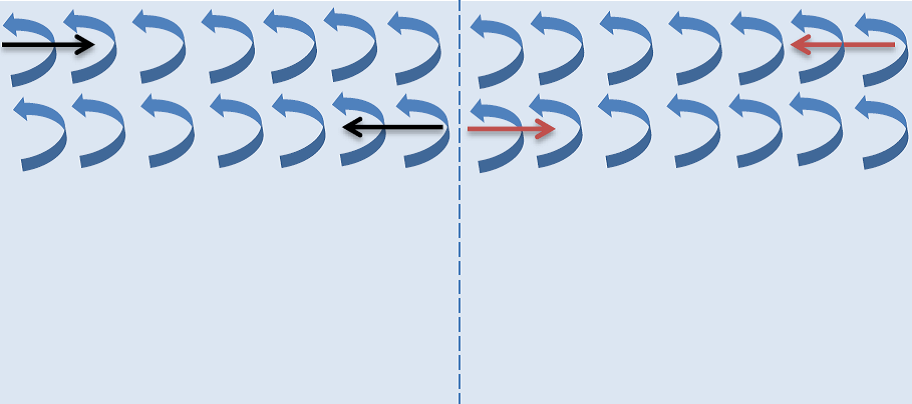How to apply resin without additions
While applying spatulate resin to avoid additions, connecting areas between adjacent coatings in which tint intensifies in tone, we must pay attention to:
Before applying finish coatings, smooth the underlying coating with 60-80 grit sandpaper, in order to remove creases and uniform absorption; then collect dust
An applicator can work the resin with spatula, on an area of fresh product of about 5-7 m width and 1 m deep; we suggest not to increase width, while depth is unlimited and vary according to the needs of each individual site
For surfaces wider than 5-7 m, for example 14 m, two installers are needed and they have to proceed working synchronously on the same axis, starting from the outer perimeter of the room to meet at the center and then switch their positiion and proceed going towards the external walls; this pattern will be repeated until the work is over.
It is very important to scrape the product both in the same way and work carefully on the meeting point, leaving it always covered with the product. The direction of the spatulate must always be the same there and back and must never be reversed, otherwise the color – in that area – would be more intense; on the floor you will notice 10-30 cm straight bars forming, more intense in color, called infill joints

The picture shows a large floor, about 10 m large, in which the horizontal arrows represent the displacement direction of the two installers, while the curved arrows represent the direction of the spatula, the dotted line represent the center of the floor
For surfaces where more than one applicator is needed, we suggest to charge one person with the mixing of products, so that installers don’t stop their work
Another advice to avoid troublesome joints is to pour the product in small amounts not on the spatula, but directly on the floor and use less product, levelling it carefully, in order to work fast with fresh product
Decorative coatings COLORPAVING EPOX STUCCO, INDUSTRIAL CHIC and EPOX CEMENTO allow a 5% dilution with water, the addition of water, however, will lighten the color a little, if compared to the pure product, which is why if you decide to dilute the product it must be done at the beginning of the work, otherwise lighter spots will arise.
In short aesthetic defects can be:
- joints between one coating and the other that are generated due to an excessive waiting time in the back of the area in which the product has already applied, thin zigzag “seams”more intense in tone will emerge
- Infills are created when the direction of spatulate is reversed, the result will be large bands of more intense color
- You will see lighter areas where diluted product – respect other areas in which the product is used pure – is applied
- Creasing lines are areas in which the prooduct is in rilief that the applicator can decide to leave or not, in order to emphasize the texture of the floor. They are not to be considered as defects, especially in decorative spatulate floorings for domestic, show room or store use, but are manual processes that emphasize and embellish the craftmanship and the uniqueness of the floor.

